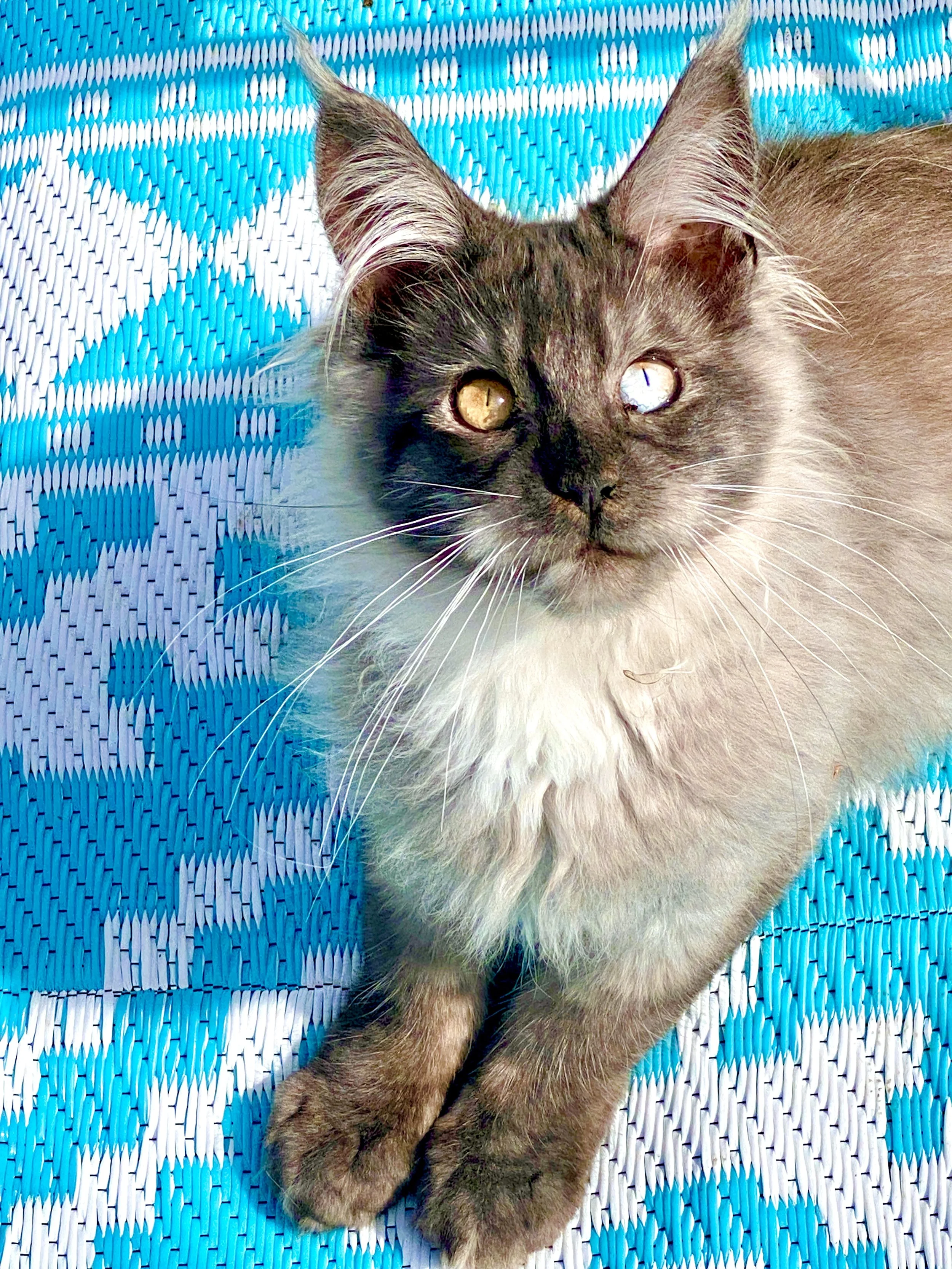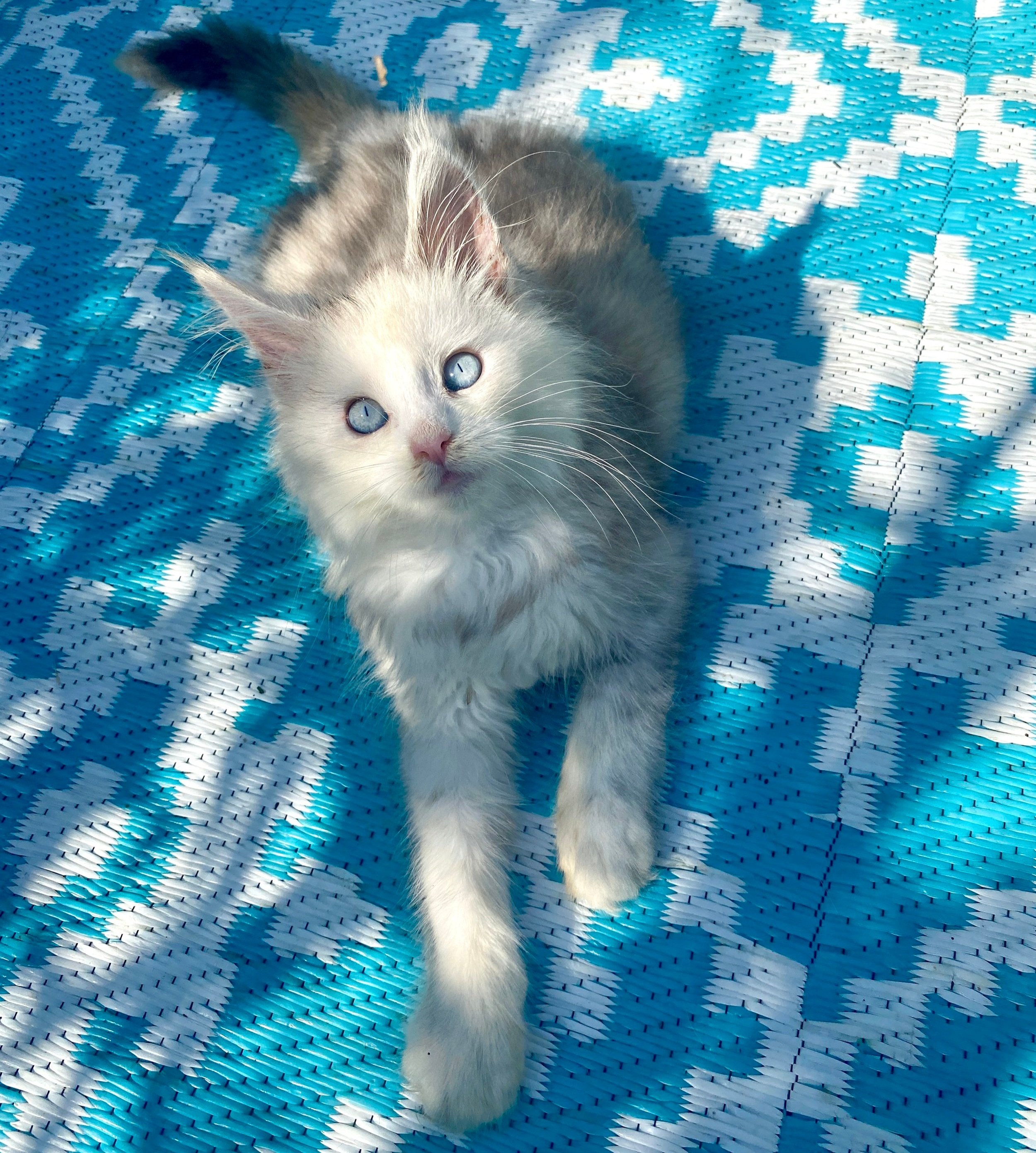Dominant Blue Eyes in Maine Coon cats
The study titled "Dominant blue eyes in Maine Coon cats: New PAX3 variant and updated phenotypic data" by Marie Abitbol, Kristina Macaulay, and the research team, identified a fourth distinct PAX3 gene variant, named DBEAGO (Agostino Dominant Blue Eyes), responsible for dominant blue eyes (DBE) in a specific Maine Coon lineage. The research provides updated descriptions of the variable clinical presentation of the DBE trait across different Maine Coon lines, including associated risks like deafness in some lines and the existence of asymptomatic carriers, known as "latent" cats.
Key Findings of the Study
Identification of a Fourth Variant: The study identified a novel frameshift variant in PAX3 exon 2 (PAX3:c.160del) in the Agostino Maine Coon line. This variant produces a truncated PAX3 protein.
Phenotype-Genotype Correlation: The Agostino variant (DBEAGO) showed a perfect correlation with the blue eye phenotype in the cats studied from that specific lineage.
Variable Deafness Association: The research highlighted the differing health associations across the various DBE variants. While data is still limited for DBEAGO, the DBERE (Rociri Elvis) variant in the Belle Ayr lineage was not linked to unilateral or bilateral deafness.
Discovery of "Latent" Cats: The study improved the phenotypic description of DBE by revealing the existence of "latent" cats in the Belle Ayr DBERE lineage—animals that carry the DBE gene but do not express the blue eye phenotype (sometimes exhibiting a red-eye effect in infancy). No latent cats were reported in the Agostino line in this particular study.
Implications for Breeding: The findings emphasize the genetic heterogeneity of the DBE trait and the necessity for specific DNA testing to inform responsible breeding practices. This helps breeders manage health risks, such as avoiding homozygous pairings that may lead to severe developmental issues or embryonic lethality.
Read the full publication: Published Article






